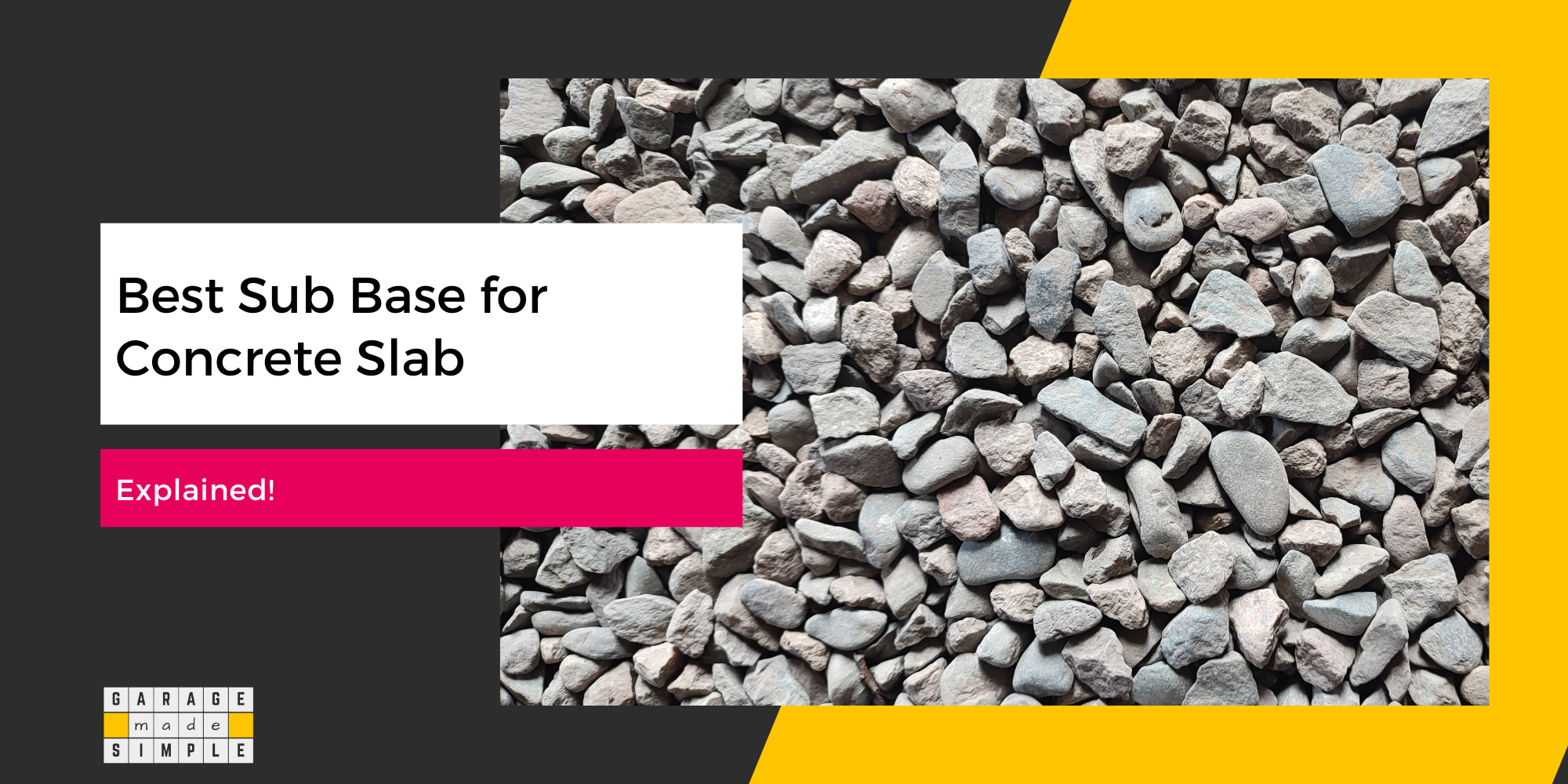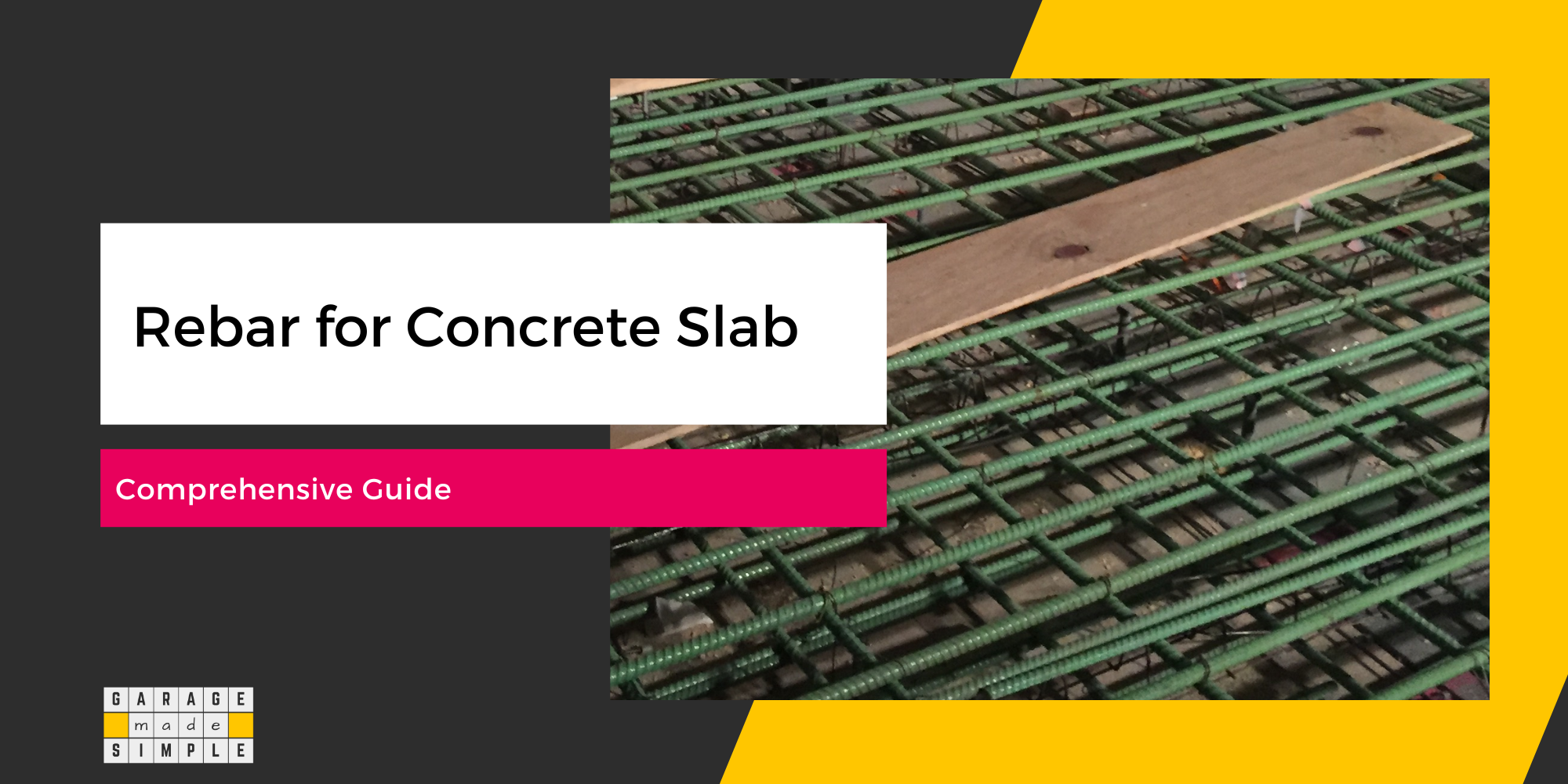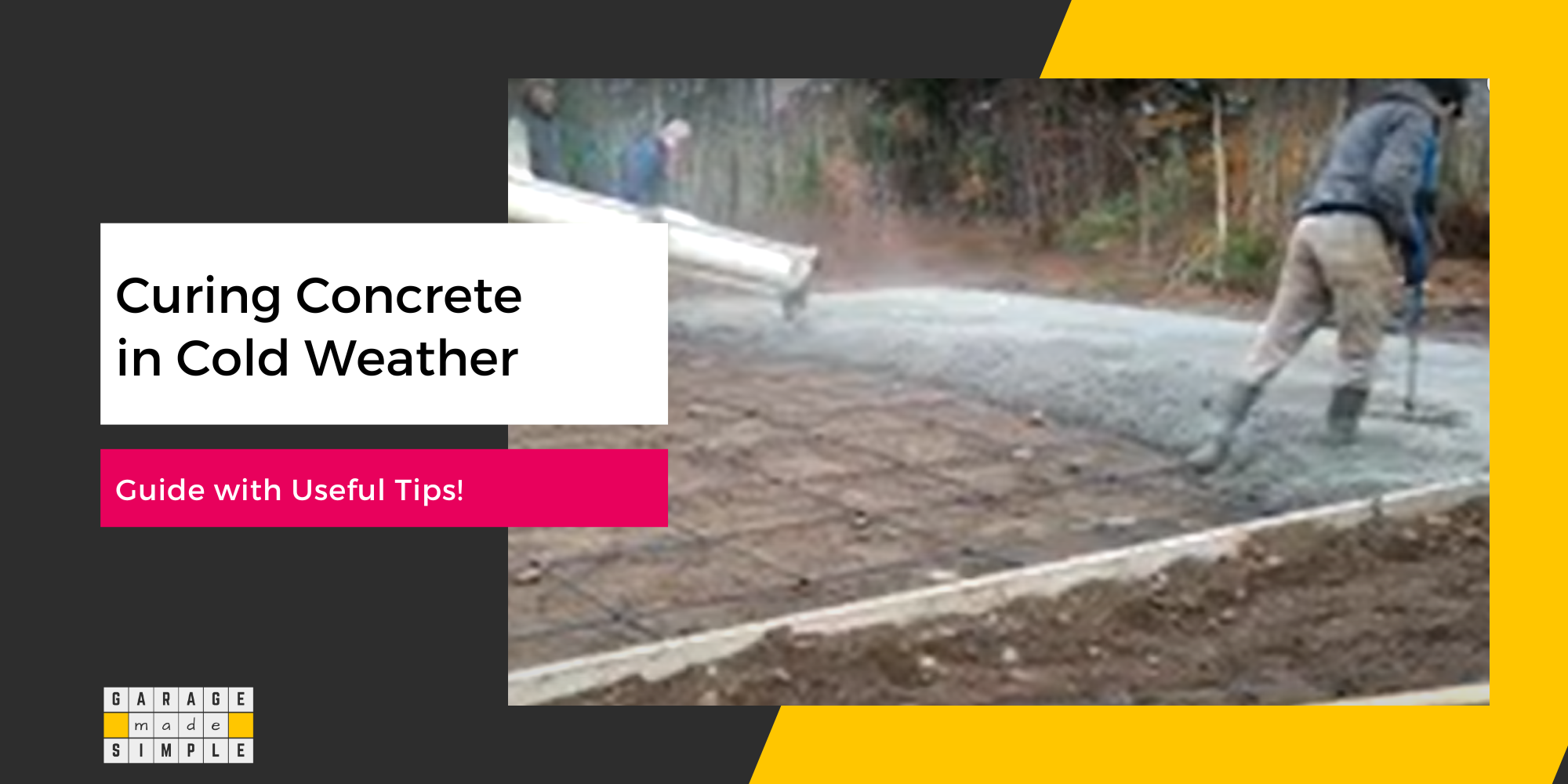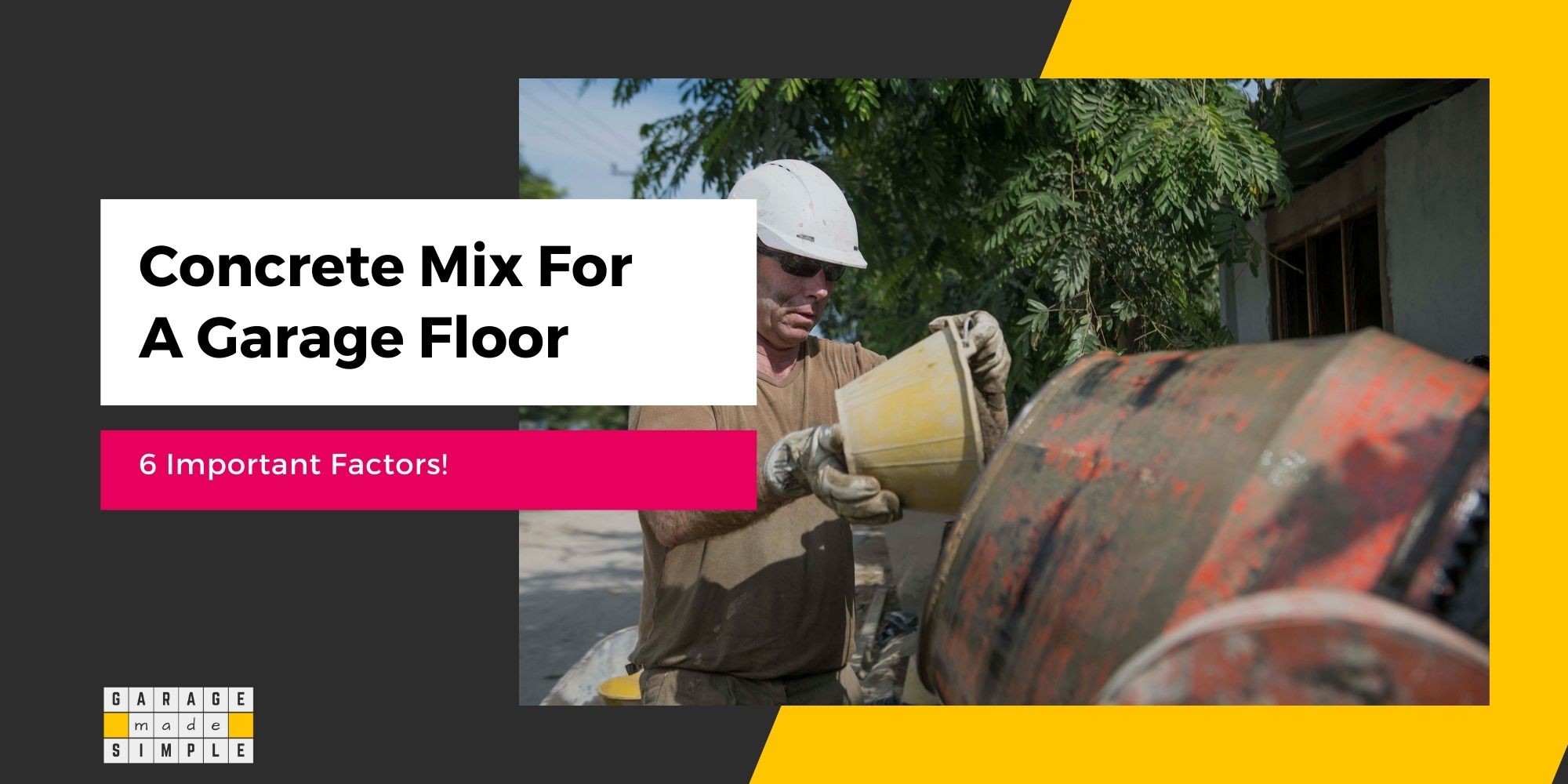Does a Garage Need Footings or Foundations? (10 Important Things Worth Knowing!)
garagemadesimple.com is a participant in the Amazon Services LLC Associates Program, an affiliate advertising program designed to provide a means for sites to earn advertising fees by advertising and linking to Amazon.com . The website is also an affiliate of a few other brands.
1. Does a Garage Need Footings?
Whether you plan to do most of the work yourself or outsource it to a local contractor, the first few steps will be dealing with garage footings and foundations. So, does a garage need footings?
A detached garage does not need footings whereas, an attached garage needs footings. Here is why.
A detached garage is usually built on slab-on-grade foundation that does not need separate footings. An attached garage, on the other hand, is generally built on a point or continuous, T-shaped foundation, along with the house. Such garage foundations always have footings.
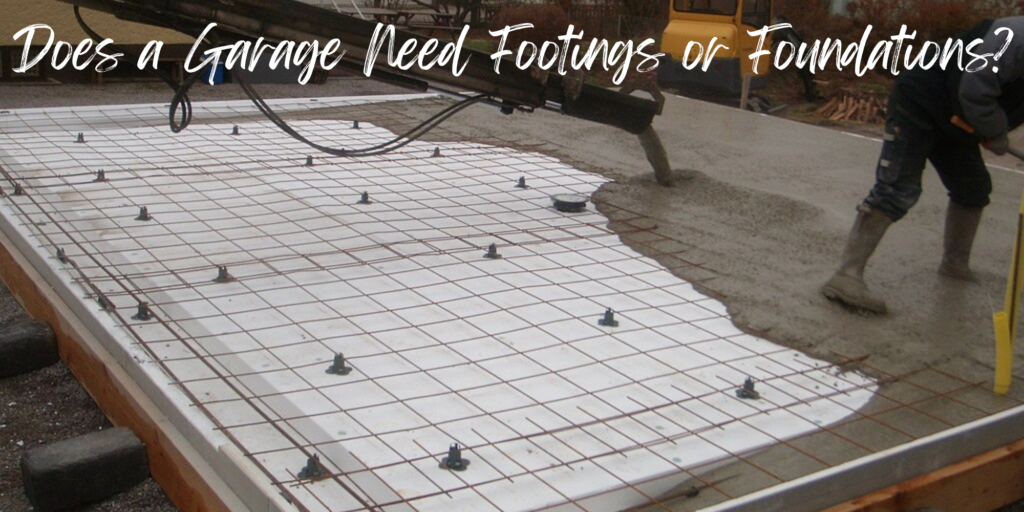
2. Difference Between Footings for Garage and Detached Garage Foundation
A detached garage foundation connects the garage walls to the ground and transfers the load from the garage floor, walls, roof, etc. uniformly to the ground for strength and stability.
On the other hand, footings for garage are relatively small piece of concrete on which the detached garage foundation sits. Footings for garage tend to be deeper into the ground and are typically used in conjunction with shallow foundations.
Footings for garage are placed below the frost line and provide additional stability to the detached garage foundation. They are typically made with reinforced concrete and help redistribute the load from the detached garage foundation into the earth and soil below.
Footings for garage are wider than the detached garage foundation wall they support so there is room to place wall forms.
The following table summarizes the differences between footing and foundation:
| Footing | Foundation |
|---|---|
| All footings are, in essence, a foundation as they are load bearing and transfer the load to the ground below. | All foundations need not be footings. For example a slab-on-grade is a foundation but not a footing. |
| Footings may support the load directly, in case of small, light structures, or through a foundation, in case of large, heavy structures. | Foundations support the load of the structure above and may sometimes transfer the load to the ground though footings deeper in the ground. |
| Footings usually have a smaller footprint than foundations. | Foundations usually have a larger footprint than footings. |
| Footings are poured deeper into the ground, usually below the frost line. | Foundations, such as slab-on-grade, are poured directly on the prepared base. They tend to be shallow but may rest on footings that are deeper in the ground. |
| Footings are typically reinforced concrete but other materials, such as, stone, brick or wood could be used as well. | In modern construction, foundations are typically reinforced concrete. They could be slabs, beams, etc. |
| Footings are less likely to be affected by soil movement, especially from freeze-thaw cycles. | Foundations are more likely to get stressed and develop cracks due to soil movement. |
T-Shaped Detached Garage Foundation
The T-shaped detached garage foundation gets its name as its cross-section looks like the inverted letter T. It can be a “point” or a “ continuous” foundation. T-shaped foundations are necessary when building where
- Ground freezes
- Ground is sloped
- Loads are high
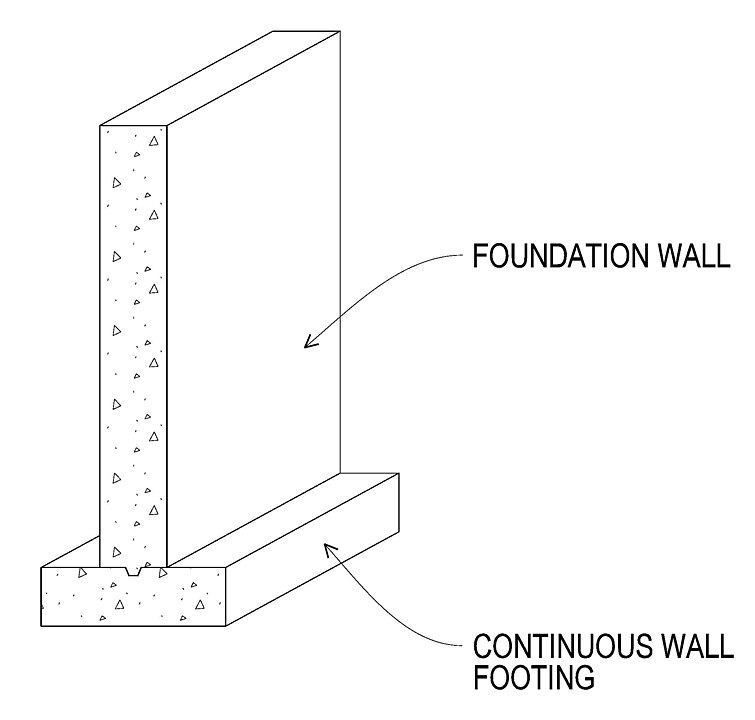
Slab-On-Grade Foundation
Slab-on-grade foundation is a single concrete slab poured directly on to a base of gravel and sand. The slab can be poured thicker at the edges to form an integrated footing. Slab-on-grade foundations are ideal where
- Ground does not freeze
- Ground is level & stable
- Loads are moderate
3. What Is the Purpose of Footings for Garage?
The purpose of garage footings is to support the foundation and prevent it from settling by distributing the load evenly over a larger area.
Every building, whether a house or a garage, must rest on a foundation. Foundations are necessary to
- bear the load of the building
- anchor it against natural forces such as earthquakes
- isolate it from ground moisture
In T-shaped foundations the footing is the part of the foundation that is directly in touch with the ground. The area of the footing is much higher than the area of the foundation wall or column.
The load of the structure above passes through the foundation to the footings. The load per square foot is reduced significantly by the higher area of the footing.
Footings for Garage serve the following purpose:
Footings for garage support the foundation wall by spreading the load on a large area. This is especially useful if you are building on soft soil with low load bearing capacity.
Footings for garage under the foundation wall are continuous. This ensures that the load of the entire garage structure is distributed evenly along the perimeter.
In case of minor localized ground settlement, the entire footing, foundation and garage structure will settle uniformly. This will prevent cracks developing in the garage floor or walls.
Footings for garage placed below the frost line will shield the building from the ground movement due to the freeze thaw cycle.
Concrete footings are cast in a trench and are reinforced with rebars. The footings are anchored to the foundation, which in turn is anchored to the concrete beams or slab.
The entire structure is integrated as one piece. Even if the soil conditions are not the same over the entire garage floor area the structure will settle uniformly without creating stress or cracks.
4. Can You Pour a Slab without Footings?
Yes you can pour a slab without footings. For light structures such as sheds and even standard garages pouring a concrete slab without footings is a common practice.
When pouring a concrete slab without footings you must ensure that
- The grade on which you are building the garage is level and not on a steep slope.
- The grade will have little erosion or soil subsidence.
- The base for the concrete slab is prepared in accordance with the best practices.
- The garage walls & roof structure are made of wood studs and joists that are lightweight.
- The load on the slab-on-grade does not exceed the recommended compressive strength of the concrete.
To be on the safe side you can pour the slab-on-grade with thickened and reinforced edges. The thick edges are, in fact, integrated footings of the slab-on-grade foundation.
The edges take the load of the entire garage structure and distribute it over a wider area with higher strength.
Slab-on-grade with thickened edges can permit you to even build a floor above your garage. You could then have a studio apartment above your detached garage, for example.
5. How Deep Should Footings for Garage Be?
How deep the footings for garage should be depends on
- Depth of the Frost Line
- Local Building Code
- Best Building Practices
Depth of the Frost Line
The frost line—also known as frost depth or freezing depth—is most commonly the depth to which the groundwater in soil is expected to freeze.
WIKIPEDIA
If you live in an area where the grade experiences ground movement due to the freeze thaw cycle, then you have to place the footings below the frost line. Most northern states in the US have frost lines that are 36” – 60” deep.
The ground about the frost line is unstable for many parts of the year due to the freeze thaw cycle. The footings therefore need to go below the frost line so that they are on relatively stable ground.
Placing the footings below the frost line is most definitely a requirement for houses and larger buildings. But even a detached garage with standard loads can have cracked floors and walls if the footings are above the frost line
Local Building Code
The best practice is to check the local building code. The code will usually specify how deep garage footings should be. This is determined by experts based on soil & climate data for your specific area.
By keeping the garage footings below the prescribed local building code, you can not only be code compliant but also have a safe & durable garage. In the long run the extra cost will be well worth it.
Freeze Thaw Cycle Free Zones
In the central regions of the US the frost line can be between 6” and 36”. In warmer states such as Florida, Texas or California it can be even lower than 6”. The freeze thaw cycle does not have much of an impact as temperatures are unlikely to fall below freezing.
In such zones, check out if there is a local building code on how deep garage footings should be. Comply with the code, if there is one.
Otherwise the best practice is that the top of the footer should be 36” below the final grade. As footer height is typically 8”, the bottom of the footer should be 42” below the final grade.
6. How Do You Dig Footings for Garage?
Before you start to dig the trench for footings for garage, you’ll need to do a few calculations. Let us say the foundation wall is going to be 8” thick and the footing will extend 12” on each side. Then the full width of the footing will be 32”.
Let us say you require 18 inches on each side as working space. This brings the trench width to 68” (18”+32”+18”).
The edges of the final garage floor should fall on the centerline of the trench. Subtract the trench width from the length and width of the garage floor. This is the perimeter that needs to be marked out on the ground using stakes.
Drive a stake at each of the four corners first. Tie a string from one stake to another and mark the ground with orange spray paint. All the digging should happen outside this orange box.
The depth of the trench will be dictated by the local building code, based on the frost line in your area. If there is no code a depth of 42” – 48” should be good.
The best way to dig up a garage footing trench is to rent a mini excavator. The process will be quick and easy. You should be able to complete the digging of a 2-car garage footing trench, within a day.
7. Do I Need Rebar in Footings for Garage?
You should definitely reinforce the concrete footings for garage with rebars. Concrete by itself has excellent compressive strength but relatively poor tensile & flexural strength. Rebars provide the tensile & flexural strength.
The garage footings will not only transfer the compressive load from the foundation walls to the ground below but will also need to stay strong under tensile & flexural stresses created by shifting ground.
Reinforcing concrete footings with steel rebars will reduce the risk of the garage footings cracking when the ground around it shifts and exerts lateral pressure on it.
Freeze thaw cycles, temperature fluctuations and change in moisture levels cause ground to swell and shrink. As the movement is not uniform the concrete footing will experience bending stress
Garage footings poured below grade and having foundation walls on them, should be reinforced by horizontal rebars running through the entire length of the footings. Typically there should be two courses of horizontal #4 rebar; one 3” from the top and the second 3” from the bottom.
For more information on footings and code compliance you should refer to section R403 of 2021 International Residential Code (IRC).
8. How Do You Pour Footings for Garage?
The way to pour garage footings is in principle similar to the way you would pour a slab-on-grade. You must make sure while digging the trench for the footers and the foundation wall that the bottom of the trench is level all across. The grade where the footer will go should be stamped firm.
Now place forms made from wood planks and kept in place with wood or steel stakes. The interior dimensions of the form should be the same as the width and the depth of the footer.
Place rebar chairs on the grade. The rebars will rest on these. It is important that the rebars should be within the footing and not at the bottom or top of the footing. Only then can rebars provide the tensile & flexural strength.
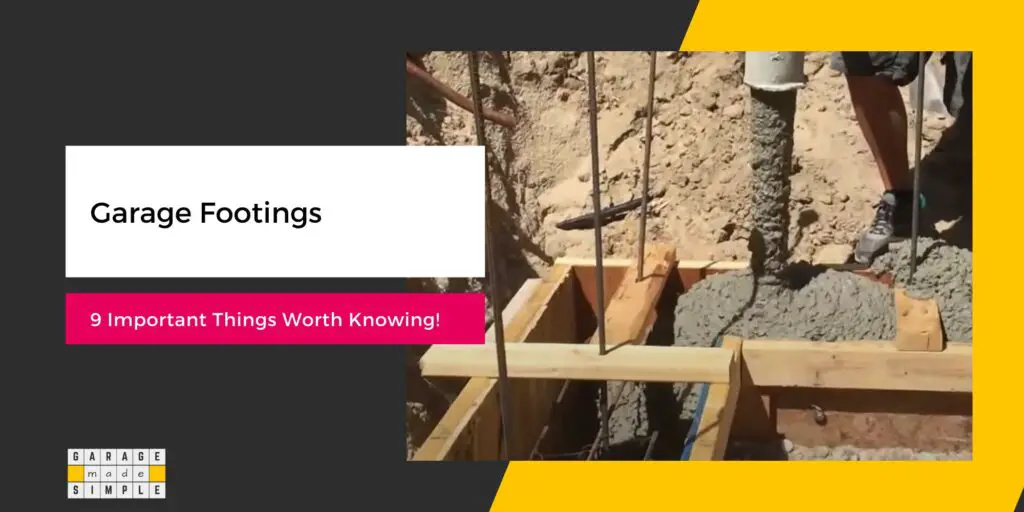
Now you can pour the concrete within the form. You can remove the forms the next day.
9. Do You Need Footings for an Attached Garage?
The best way to build an attached garage is to build it at the same time as the house. The attached garage should be a part of the house plan and design. The footing for an attached garage will be incorporated as part of the house plan.
The house will certainly require a foundation and footings. When the attached garage is being constructed along with the house it is just a part of the complete house footing and foundation structure.
This way the attached garage structure is part of the whole structure. Whatever the foundation type both the house and the attached garage will always settle at the same rate. This ensures that there is no stress leading to cracks.
The situation gets a bit tricky if you are wanting to add an attached garage to an existing house. It is best to consult a qualified structural engineer or a contractor you can trust.
Make sure to check with the local building authority as well. They may have Certain regulations or advice based on the local soil and weather conditions.
10. Do You Need Footings for a Detached Garage?
Most detached garages are simple structures and are, therefore, built on a slab-on-grade foundation. In most soil conditions a slab-on-grade does not require a footing if the loading is going to be nominal, as is the case in a simple detached garage.
Even for a slab-on-grade foundation for a detached garage, you have the option of strengthening the edges by making it thicker at the time the concrete is poured. This is always a good idea as it will not increase the cost too much but will make the detached garage a lot stronger.
Large detached garages designed to park 3 or 4 cars are much heavier and have a larger area. A slab-on-grade foundation may not be able to take the load. You may then choose a point T-shaped foundation with columns or continuous T-shaped foundation with foundation walls.
In either case a T-shaped foundation implies that garage footings are required.
Thank you very much for reading the post. I do hope you found it informative and useful.

